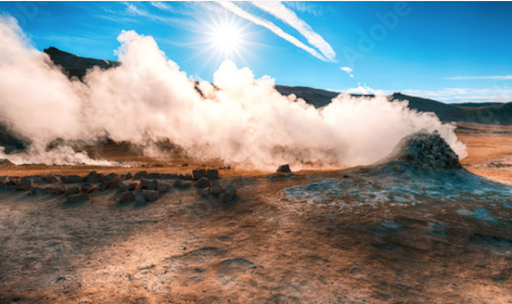Sources of Renewable Energy
Catherine Todd. 08/28/2021
Currently, there are unprecedented levels of greenhouse gasses in the air and global temperatures continue to rise. Still, humans heavily rely on the use of fossil fuels to create the electricity that most of the world runs on. Up until recently, fossil fuels have been more convenient and cost effective. However, with the many advances in science, renewable alternatives to fossil fuels have become much more realistic and useful. Here are some of the leading renewable energy alternatives.
Solar power is a common energy alternative. By utilizing photovoltaic cells made of silicon, it absorbs energy from sunlight. The energy knocks electrons away from atoms and flows through conductors to form an electrical circuit that creates direct current electricity. There is an abundance of solar energy in theory since there are enough photons hitting the earth within an hour to generate power for about a year. Despite being the fastest-growing source of energy, however, solar energy provides just 0.5% of the energy on earth. When placing solar panels, though, it is important to set them up in certain locations. Certain cities that are generally foggy such as San Francisco are not ideal for solar panels.
For these locations, wind turbines might be a better option. Wind turbines work by using blades like a propeller, which are turned by the wind and therefore turn a generator that creates electricity. Usually, wind turbines use either a two or three bladed propeller. There are about 57,000 wind turbines in the United States and if placed in the ideal location, each of these turbines could power a single home. That is, assuming that they are all small turbines. Very large wind turbines with blades about 162 meters long can generate up to 58 times the energy of small wind turbines. Furthermore, wind turbines have to be placed in mountainous regions or regions with similar wind levels in order for them to generate a reasonable amount of power. Some of the largest barriers to increasing the amount of wind turbines is their large size and unappealing appearance.
Nuclear energy also generates electricity. Though not exactly a renewable energy source, nuclear energy has zero emissions, so it is a positive form of energy for the sake of mitigating climate change. Within a nuclear power plant, uranium is split up into smaller atoms by using a process known as fission. This creates a heat source which is used to heat water and create steam. The steam is then converted into energy by using a turbine generator. This explains why nuclear energy generation does not produce fossil fuel emissions: none are burned. Nuclear energy is not renewable though because uranium is not a resource that renews itself like wind or sunlight. Nuclear energy is currently powering about 20% of the United States’ electricity. However, people are skeptical of expanding nuclear power because if a reactor were to melt down, all living organisms around the reactor could suffer radiation poisoning.
Similarly, geothermal energy also utilizes steam to create energy. The steam for geothermal energy, however, comes from the ground, where hot pools of water lie a few miles beneath earth’s surface. This steam is then used to turn a turbine and generate electricity. To do this, three types of geothermal power plants are used: dry steam, flash steam, and binary steam. Dry steam uses steam found underground, like those near geysers for power generation. Flash steam uses water from underground reservoirs that have a temperature above 360 degrees Fahrenheit. The water decreases in pressure as it goes up into wells and steam is created. Finally, binary steam generation works on water as low as 225 degrees Fahrenheit and uses water to boil a low boiling point fluid, which is vaporized and used to create energy. The United States primarily produces geothermal energy from dry steam plants located in Northern California geysers because the other geysers are located in Yellowstone National Park. Iceland is also a large consumer of geothermal energy and creates about 25% of its electricity from geothermal plants and around 85% of heating and cooling.

Finally, tidal energy is another form of renewable energy that is still in early development. Energy can be produced by utilizing the flow of the ocean between high and low tides. The three ways that it is harnessed are in tidal streams, barrages, and tidal lagoons. Tidal stream generation involves placing the turbine in shallow, fast moving water that is created by the tide. Barrages are similar to dams that are used for hydropower and can be placed across water sources like bays and harnesses. Finally, a tidal lagoon source would work like a barrage on a natural coastline and would operate during the filling and emptying of the lagoon. Tidal energy is more powerful than wind energy because water is denser than air, and contrary to solar and wind, tides are reliably predictable. However, similar to hydropower, tidal energy disrupts the ocean and its ecosystem.
In conclusion, there are many alternatives to fossil fuels that can be found in the above list as well as some not listed. Although all the above methods have their pros and cons, together they can create a strong energy source for our future.
Cover photo: (NRDC)
